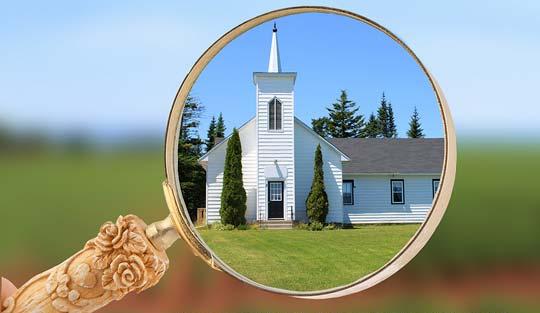
Is the “environment” something outside the building that you may be in right now? If you’re out in the open air, is there a boundary between you and the environment? Are we humans distinct from the environment, connected to it, or part of it?
Think about this: your body is about 60 per cent water. For most of us, water comes out of a tap at the end of a pipe that came from a dam that was filled by a stream that was fed by the rain that came from the sea. This means that you are intimately connected to the rain, the rivers and the sea-the environment. They are a part of you. The other 40 per cent of you is drawn from what you eat-things that grow in the soil or the sea and are energised by the sun.
During your lifetime, the majority of your body’s cells will be replaced many times over. Very few parts of your body, including your brain, are not totally replaced more than once. You are an entire community of organisms in which your own cells are a minority constituent by number (especially if you had a shower this morning)! We are all made of the recycled constituents of other living organisms. Thus David Suzuki, in his book The Sacred Balance: Rediscovering Our Place in Nature, writes: “You and I don’t end at our fingertips or skin-we are connected through air, water and soil; we are animated by the same energy from the same source in the sky above. We are quite literally air, water, soil, energy and other living creatures.”
what is the “environment”?
We could say that the environment is a closely interconnected system of living organisms and the physical components of the atmosphere, soil, rocks and waters of the planet. We are not separate from this environment. Each of us is a part of it.
Unfortunately, most of us live and work in buildings, cities or other highly modified and artificial environments, and thus we tend to overlook our intimate connection to the natural systems of the planet and our impact on them.
But humans have a special place in the environment. Technology has enabled us to dominate most of the world around us. Beginning with fire, then horsepower, fossil fuels and most recently nuclear power, humans have utilised energy sources in addition to their own muscle. The ability to tap these external energy sources has given us the ability to modify much of the environment to suit our own purposes. In that sense, we have a special position.
Humans also appear to be the only species on earth with a moral capacity. Although there is evidence of altruistic behaviour in some primate species, humans clearly stand out. We have a sense of responsibility to self, family, neighbours, the community, the nation and to people beyond our borders. We can also sense our responsibility to the world’s non-human species. Thus we see, for example, societies for protecting animals from human cruelty, wildlife rescue organisations and other organisations that try to prevent the loss of species resulting from our domination of the planet.
Some of the common arguments for protecting the environment have an ultimately selfish motivation. If we don’t look after our home, we’ll suffer in the long run. While that is undoubtedly very likely to happen, there are other reasons for caring for the natural world.
The environmental concerns of many arise from an ethical position often termed ecojustice: the burden of environmental damage is borne disproportionately by the poor, the disadvantaged and by minority groups. On the other hand, the responsibility for creating much of the environmental damage lies disproportionately on the wealthy. Justice for the disadvantaged is a common theme in the Bible, especially in the Old Testament. The concept of ecojustice is extended to include justice for the innumerable non-human species with which we share the planet.
spiritually speaking
There is a spiritual dimension to caring for the natural world.
As Paul Santmire explains in an article entitled “Partnership with nature according to the Scriptures: beyond the theology of stewardship,” published in Christian Scholar’s Review, the story of the Bible when read as a whole begins with creation and ends with a new creation- beginning and consummation.
Paul Santmire suggests that there are two dimensions to the humans’ relationship with creation or nature. The first is in the form of creative intervention in partnership with God and nature in order to build human community over the earth. The second is in the form of partnership with God and nature in sensitive care for nature. It is through both of these partnerships that humans image God (see Genesis 1:26- 27; 5:1, 2).
God’s history in relationship with the whole of creation finds its fulfilment through the “Christ-event,” and it is through this event that humans are restored to the spiritual place intended for them within the creation history. That spiritual place includes caring for creation by entering into partnership with the creativity of God.
Revelation 14:7 tells of an angel flying in midair, who “said in a loud voice, ‘Fear God and give him glory, because the hour of his judgment has come. Worship him who made the heavens, the earth, the sea and the springs of water.’ “
But how does one worship He who made what we call nature or the environment? Certainly worship is not performed by contributing to the thoughtless pollution of the earth’s atmosphere, the sea and the springs of water; to the extermination of species; and to the degradation of the land.
Every week millions of Christians meet together in churches around the world to worship God. Ask them why, and most would respond with something like, “Because it’s the Sabbath day on which we remember the Creator.” That notion is based on the fourth of the Ten Commandments as recorded in Exodus 20:8-11. But there is a second version of the Commandments found in Deuteronomy 5:12-15. There one is instructed to observe the Sabbath because we’ve been redeemed from slavery- from sin. This being so, then let not those who’ve been redeemed from slavery enslave the creation for their selfish ends. Consider another passage from Revelation: “And the twenty-four elders, who were seated on their thrones before God, fell on their faces and worshipped God, saying: ‘We give thanks to you, Lord God Almighty, the One who is and who was, because you have taken your great power and have begun to reign. The nations were angry; and your wrath has come. The time has come for judging the dead, and for rewarding your servants the prophets and your saints and those who reverence your name, both small and great-and for destroying those who destroy the earth.’ ” (Revelation 11:16- 18; emphasis added).
what it means
What is the cause of this destruction of the earth recorded in Revelation? One high impact cause is “affluenza”! Those of us living in the Western world are in the top 10 per cent of the world’s wealthiest people, and many of us are in the top 1 per cent. Essentially, overconsumption- the self-indulgent habits of the wealthy-is a major culprit. And that’s you and me, like it or not. We transport goods and people around the world, we indulge in the profligate use of power derived from fossil fuels, we engage in inappropriate agricultural practices, including excessive meat production, which demands the clearance of forests, and the list goes on.
As Grundoon Groundhog, a character in the Pogo cartoons created by Walt Kelly, said, “We have met the enemy and he is us!”
Don’t destroy the earth. But if you do, God won’t have to destroy you. You will have destroyed yourself.










What's on your mind